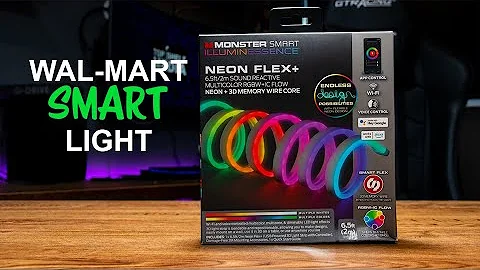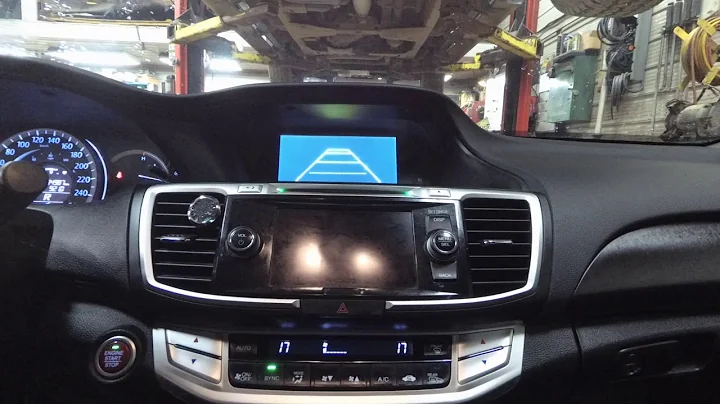Step-by-Step Guide: Changing Motorcycle or ATV Grips
Table of Contents
- Introduction
- Tools Needed
- Removing the Old Grips
- Cleaning the Bars
- Choosing the New Grips
- Installing the New Grips
- Applying Grip Glue
- Safety Wiring the Grips
- Cutting Excess Wire
- Conclusion
🏍️ Changing the Grips on a Motorcycle or ATV: A Step-by-Step Guide
Changing the grips on a motorcycle or ATV is a simple task that any rider should know how to do. Whether your grips are worn out, torn, or simply out of style, replacing them can be a quick and easy way to freshen up your ride. In this article, we'll take you through the process of changing your grips, step by step. From removing the old grips to installing the new ones, we'll cover everything you need to know to get the job done right.
Introduction
Motorcycle and ATV grips are essential for providing comfort and control while riding. Over time, these grips can become worn, torn, or just outdated. Replacing them is a relatively easy task that can be done at home with just a few basic tools. In this guide, we will walk you through the process of changing your motorcycle or ATV grips, from removing the old grips to installing the new ones. Let's get started!
Tools Needed
Before you begin, gather the following tools:
- Screwdriver
- Contact cleaner
- Rags
- Grip glue
- New set of grips
- Safety wire pliers (optional)
- Safety wire (optional)
1. Removing the Old Grips
There are a few different methods for removing old grips, but one of the most common is using a screwdriver and contact cleaner. Start by working the screwdriver underneath the grip, then spray a little contact cleaner to break the connection between the grip and the bar or throttle. Continue working your way toward the end of the grip, twisting it back and forth until it loosens up. Repeat the same process for the other side.
2. Cleaning the Bars
Once the old grips are removed, use contact cleaner and a rag to clean any old glue or residue off the bars. It is important to clean these parts thoroughly to ensure the new grips can be installed properly and adhere to the bars correctly. If you plan on running wrap-around hand guards, check for any plugs in the bar ends and remove them before installing the new grips.
3. Choosing the New Grips
When selecting new grips, consider the type of bike you have. Motorcycle and ATV grips differ from each other, with motorcycle grips having a larger inner diameter for the throttle side. ATV grips, on the other hand, do not come with a shoulder on the inside. Choose a set of grips that are compatible with your bike and fit your personal preferences in terms of style, material, and grip compound.
4. Installing the New Grips
To install the new grips, start by applying grip glue to the throttle tube and the inner edge of the grip. Be generous with the glue to ensure a secure hold. Slide the grip onto the throttle tube or handlebar, making sure it is in the correct position. Wipe off any excess glue that may have oozed out. Repeat the same process for the other side.
5. Applying Grip Glue
Grip glue is essential in securing the grips to the bars. It creates a strong bond that prevents the grips from slipping during use. When applying grip glue, make sure to cover the entire throttle tube or handlebar evenly. This will ensure that the grip adheres properly and stays in place.
6. Safety Wiring the Grips
For added security, you can use safety wire to further secure the grips to the bars. Cut six even pieces of wire and wrap them around the grip, starting from the inside. Use safety wire pliers to clamp the ends together, then spin the wire to tighten it around the grip. Repeat this process for three ties on each grip, spacing them out evenly.
7. Cutting Excess Wire
After safety wiring the grips, cut off the excess wire, leaving no more than a quarter inch on each end. To prevent the wire ends from catching on your gloves, embed them into the grip using pliers. Repeat this process for all the wire ends.
Conclusion
Changing the grips on your motorcycle or ATV is a relatively straightforward process that can make a big difference in terms of comfort and style. With the right tools and a step-by-step approach, you can easily replace your old grips with new ones that suit your needs. Enjoy the enhanced control and aesthetics of your fresh set of grips and ride on!
FAQs
Q: How often should I change my motorcycle or ATV grips?
A: It depends on how frequently you ride and the condition of your current grips. If you notice signs of wear, tear, or discomfort, it may be time to replace them.
Q: Can I install ATV grips on a motorcycle?
A: No, ATV grips are designed for twist throttles and do not have the same inner diameter as motorcycle grips. Make sure to choose grips that are compatible with your specific bike.
Q: Do I need to safety wire my grips?
A: Safety wiring is optional but recommended for added security. It helps to prevent the grips from slipping during aggressive riding or in wet conditions.
Resources:







